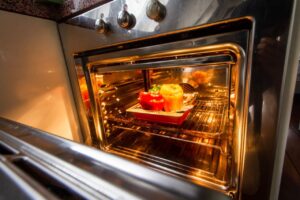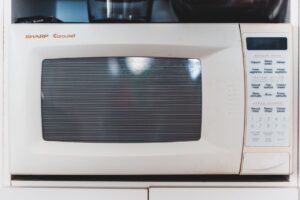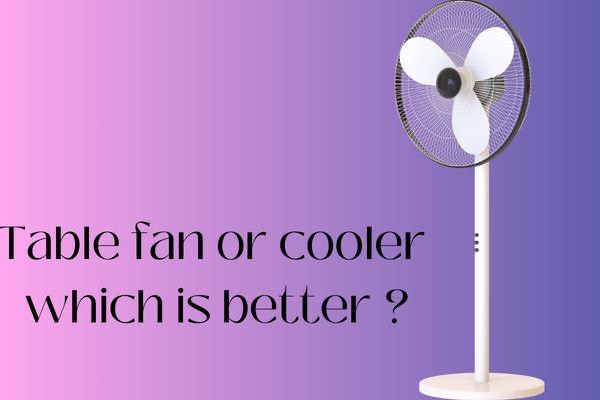Introduction of Which is healthy OTG or microwave
Oven Toaster Grill (OTG) and the microwave both promise convenience and efficiency in the kitchen, but which is healthy OTG or microwave ? In this blog post, we’ll dive into the world of OTGs and microwaves to help you make an informed decision about which appliance is best for your health. So, grab a seat and let’s explore the sizzling debate of OTG versus microwave!
Table of Contents

Oven toaster grill ( OTG )
Oven toaster grill (OTG) is a versatile kitchen appliance that combines the functionalities of an oven, a toaster, and a grill. It is commonly used for baking, toasting bread, and grilling food items like kebabs or vegetables.
One of the advantages of using an OTG is its ability to provide even heat distribution, resulting in evenly cooked food with a crispy exterior and juicy interior. This makes it perfect for baking cakes, cookies, or roasting meats.
Another benefit of OTGs is that they allow you to control the temperature precisely. You can adjust the temperature according to your recipe requirements and achieve excellent results consistently.
Additionally, OTGs come with multiple racks or shelves which enable you to cook different dishes simultaneously without mixing flavors. This feature comes in handy when hosting parties or preparing elaborate meals.
However, it’s important to note that OTGs are not suitable for quick cooking tasks as they take longer than microwaves to preheat and cook food. They also consume more electricity compared to microwaves.
Microwave
Microwave ovens have become a staple in modern kitchens, offering convenience and speed when it comes to cooking or reheating food. These compact appliances use electromagnetic waves to heat the food directly, making them incredibly efficient. But are they healthy?
One of the advantages of using a microwave is that it requires little to no oil for cooking. This means you can enjoy your favorite dishes with reduced fat content. Additionally, because microwaves cook food quickly at high temperatures, they retain more nutrients compared to other cooking methods such as boiling or frying.
However, there have been concerns about the potential negative effects of microwaves on our health. Some studies suggest that prolonged exposure to microwave radiation may lead to certain health issues like cataracts or decreased fertility. However, these claims remain controversial and inconclusive.
To ensure safety while using a microwave oven, it is important to use only microwave-safe containers and avoid heating foods in plastic containers unless specified as microwave-safe. Always follow the manufacturer’s instructions and be cautious when removing hot items from the appliance.

Which is healthy OTG or Microwave
When it comes to cooking appliances, two popular options are the Oven Toaster Grill (OTG) and the microwave. Both have their own set of advantages and disadvantages, but which one is healthier? Let’s delve into this debate further.
The OTG, as the name suggests, combines the functions of an oven, toaster, and grill. It uses heating elements at the top and bottom to cook food evenly. This appliance is great for baking breads, cakes, and cookies or grilling meats and vegetables. With precise temperature control options, you can ensure that your food is cooked to perfection.
On the other hand, we have the microwave which uses electromagnetic waves to heat up food quickly. It excels in reheating leftovers or defrosting frozen items in no time. Microwaves also come with features like steam-cooking or sensor technology for hassle-free cooking.
In terms of healthiness, both appliances have their pros and cons. The OTG allows you more control over your cooking process since you can see how your food is being cooked through its transparent door. It also retains more nutrients compared to a microwave due to its slower cooking process.
However, microwaves are considered healthier by some because they require less oil for cooking as most dishes can be prepared without adding any fat at all! They also tend to retain moisture better than an OTG resulting in juicier dishes.
It’s important to note that while both appliances are safe when used correctly following manufacturer instructions; certain materials like metal should never be used inside a microwave as it poses safety hazards!
Whether you choose an OTG or a microwave depends on your specific needs and preferences – there isn’t necessarily a clear winner when it comes to healthiness! Consider what type of foods you’ll be preparing most often before making your decision
Vessels that are safe to use in microwave or OTG
When it comes to cooking in the microwave or OTG, it is important to choose the right vessels for a safe and healthy cooking experience. Here are some vessels that you can safely use in both appliances:
1. Microwave-safe glass: Glass dishes and bowls labeled as microwave-safe are an excellent choice. They heat up evenly and do not leach any harmful chemicals into your food.
2. Ceramic cookware: Look for ceramics that have been specifically designed for microwave or oven use. These dishes retain heat well and ensure even cooking.
3. Silicone bakeware: Silicone molds, cake pans, and baking sheets are great options for both the microwave and OTG. They are flexible, non-stick, and can withstand high temperatures without releasing toxins.
4. Paper products: Microwavable paper plates, cups, and towels can be used safely but should only be used once due to potential chemical transfer from recycled materials.
5. Heat-resistant plastic containers: Opt for BPA-free plastic containers that are labeled as microwave-safe if you need a lightweight option for reheating leftovers.
Remember to avoid using metal vessels or those with metallic trims as they can cause sparks in the microwave or damage heating elements in the OTG.
By choosing appropriate vessels for your appliance of choice, you can ensure safe and healthy cooking outcomes!
Foods that can be cooked in microwave or OTG
When it comes to cooking, both the microwave and the OTG offer their own unique advantages. Let’s take a look at the types of food you can cook using each appliance.
In the microwave, you can easily reheat leftovers, pop popcorn, steam vegetables, and even defrost frozen foods in a matter of minutes. It’s also great for quickly cooking certain dishes like scrambled eggs or mug cakes.
On the other hand, an OTG is perfect for baking breads, cookies, cakes, and pizzas. It provides a more traditional method of cooking with its heating elements on top and bottom. You can roast meats or vegetables in an OTG to achieve that delicious crispy texture.
However, there are certain limitations when it comes to using these appliances. Microwaves may not produce crispy results like an OTG does for certain dishes. On the other hand, some delicate desserts may require precise temperature control which only an OTG can provide.
Choosing between a microwave and an OTG depends on your specific needs and preferences when it comes to cooking different types of food. So go ahead and experiment with both appliances to discover new flavors!
Pros and cons of OTG or microwave
When it comes to deciding between an oven toaster grill (OTG) and a microwave, there are several factors to consider. Both appliances have their own set of advantages and disadvantages, so let’s take a closer look at each.
The OTG offers the advantage of providing more even heat distribution, making it ideal for baking cakes, cookies, and other delicate pastries. It also allows you to control the temperature precisely, giving you more control over your cooking process. Additionally, an OTG can be used for grilling meats and vegetables, giving them a delicious smoky flavor.
On the other hand, microwaves offer convenience and speed. They are perfect for reheating leftovers or quickly defrosting frozen foods. Microwaves also use less energy compared to OTGs, which can help reduce your electricity bills.
However, one drawback of microwaves is that they may not always produce evenly cooked food. Some dishes may become soggy or lose their texture when heated in a microwave. Furthermore, microwaves cannot achieve the same level of browning as an OTG when it comes to roasting or baking certain dishes.
In conclusion,
both the OTG and microwave have their own unique benefits and limitations.
It ultimately depends on your cooking preferences and needs.
Consider what type of recipes you enjoy preparing most frequently,
and choose the appliance that best suits those requirements
Tips for using OTG and microwave
1. Read the instruction manual: Before using either an OTG or a microwave, it is essential to read the instruction manual thoroughly. This will give you valuable information on how to operate the appliance safely and effectively.
2. Use appropriate cookware: In both OTGs and microwaves, it is important to use cookware that is suitable for the specific appliance. For example, in a microwave, avoid using metal containers as they can cause sparking and damage the oven. In an OTG, choose oven-safe dishes made of glass or ceramic.
3. Follow cooking times and temperatures: Each recipe may have different recommended cooking times and temperatures for both OTGs and microwaves. It’s crucial to follow these guidelines accurately to ensure your food cooks properly without undercooking or burning.
4. Rotate food when necessary: To ensure even cooking in an OTG, consider rotating your food halfway through the cooking process. This helps distribute heat more evenly throughout the dish.
5. Avoid overcrowding: Whether you’re using an OTG or a microwave, avoid overcrowding the cooking area with too many dishes at once. This can hinder proper circulation of heat in both appliances.
6.Use microwave-safe covers: When reheating food in a microwave, cover it with a microwave-safe lid or wrap it with plastic wrap specially designed for microwaving purposes.
This prevents splattering while allowing steam to escape.
7.Clean regularly: Regular cleaning of both your OTG and microwave is essential for maintaining hygiene standards.
It also ensures optimal performance by removing any built-up grease or residue from previous usage.
Remember that these tips serve as general guidelines but may vary depending on individual models and brands of appliances.
Always refer back to your appliance’s user manual if you encounter any specific instructions or doubts about operating your particular model.
Frequently asked questions on OTG and microwave
Q. What is the best healthy alternative to a microwave?
Ans. A steam oven or a convection oven with low-power settings can be a good alternative to a microwave for heating food.
Q. Is OTG baking better than air frying?
Ans. OTG baking and air frying have different benefits – OTG baking provides a more traditional baking experience, while air frying offers a healthier way to achieve a crispy texture.
Q. Can we reheat food in OTG?
Ans. Yes, you can reheat food in an OTG by using the appropriate temperature and time settings, similar to a regular oven.
Q. Which type of oven is better for home use?
Ans. It depends on your cooking preferences – a convection oven provides versatility with baking, roasting, and grilling options, while a microwave-convection combo offers the convenience of both microwave and oven functionalities.
Q. What consumes more electricity, OTG or Microwave?
Ans. Microwaves generally consume more electricity than OTG due to their higher power outputs and the nature of their heating mechanism.
Q. Can we keep an oven on the fridge?
Ans. It is not recommended to keep an oven on top of a fridge as ovens generate significant heat during operation, which can interfere with the proper functioning of the fridge’s cooling system and potentially cause damage.
Q. Can we keep an OTG or microwave on a wooden table?
Ans. Yes, you can keep an OTG or microwave on a wooden table. Ensure that the table is sturdy enough to support the weight, provide proper ventilation for the appliance, and use heat-resistant mats to protect the table surface from heat damage.
.
Conclusion
After exploring the features, benefits, and considerations of both OTG and microwave ovens, it is clear that neither option can be definitively labeled as “healthy” or “unhealthy.” The choice ultimately depends on individual preferences, cooking needs, and lifestyle.
Both OTGs and microwaves have their unique advantages when it comes to cooking various types of food efficiently. It’s important to assess your own needs and priorities before making a decision.
Happy cooking!


